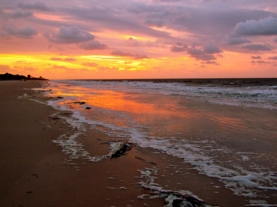Coastal communities can help combat ocean acidification by cutting back on water pollution
Jun 5, 2014, By Elspeth Dehnert and ClimateWire
For coastal communities in the United States, the path to confronting souring seas can likely be found close to home in their very own backyards.

The National Oceanic and Atmospheric Administration’s Ocean Acidification Program has established a successful monitoring program at the regional scale. A bit over one month ago, it made a startling discovery off the country’s West Coast—proof that ocean acidity is indeed having a negative impact on marine species
Credit: Jeff Gunn via Flickr
In fact, according to a recent study co-authored by several current and former Stanford researchers, there are several local and regional actions—many of which are not too costly—that can be taken to accelerate the adaptation to ocean acidification.
“We think of ocean acidification as being controlled by carbon dioxide, and it is, but there are a lot of different things humans do that affect the chemical equilibrium of the carbonate system in the coastal zone,” said Aaron Strong, lead author of the study and a graduate student in the Emmett Interdisciplinary Program in Environment and Resources.
He pointed to river discharge, local-scale upwelling, and nutrient and stormwater pollution as some of the major factors behind ocean water’s increasingly unbalanced acidity levels.
“Ocean acidification should become a part of the conversation among quality managers, stormwater managers, agricultural managers … and it tends not to be in that space,” Strong added.
To fill in the gaps, the study outlines current local and regional ocean-acidification management efforts and recommends nine other “opportunities for action” that state agencies, nongovernmental organizations, universities and industry can implement for about $1 million a pop.
“An international agreement on climate change to reduce CO2 is not the only solution,” he said.
Read more here
